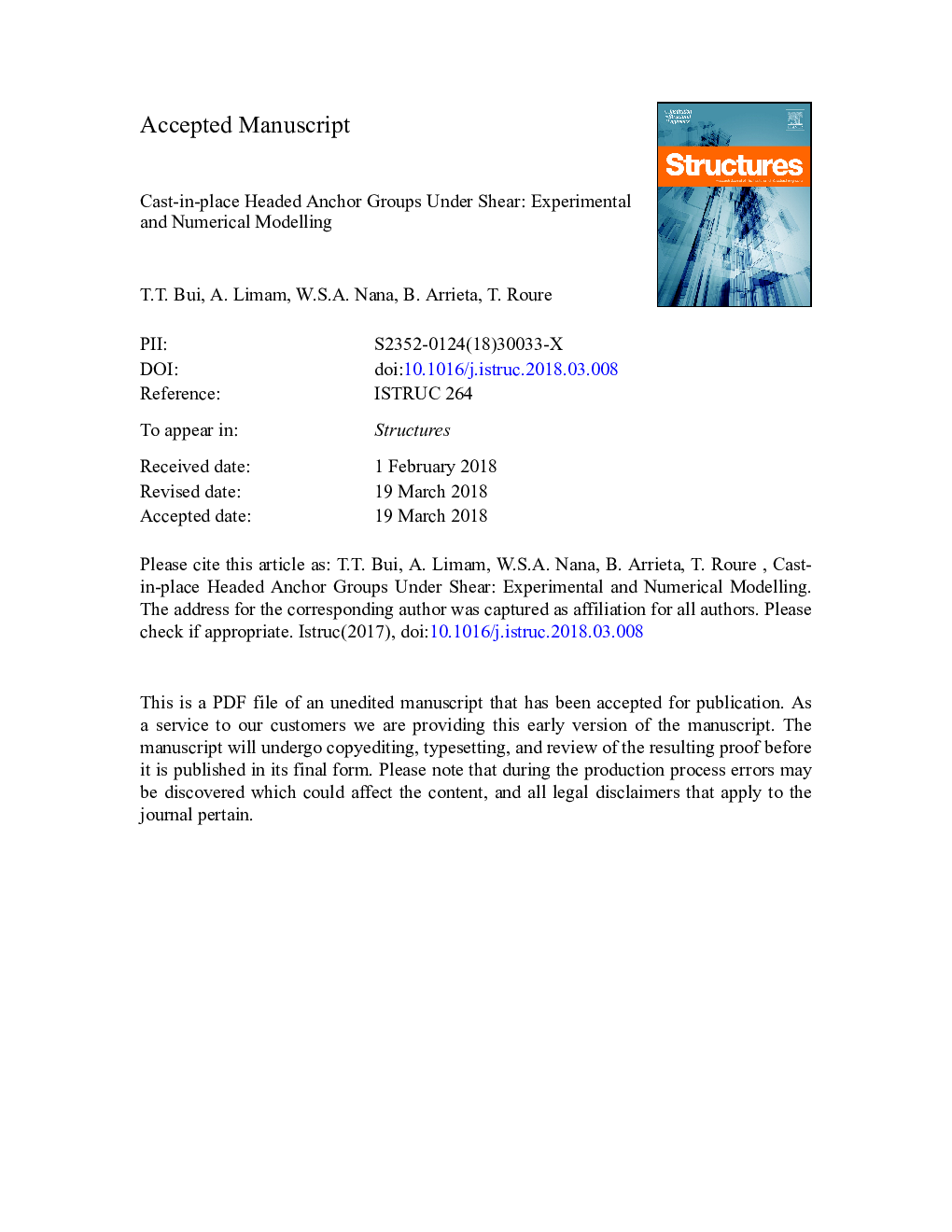| Article ID | Journal | Published Year | Pages | File Type |
|---|---|---|---|---|
| 6774503 | Structures | 2018 | 36 Pages |
Abstract
In nuclear power plants, equipment is usually anchored in concrete. Earthquake verifications consist not only in checking the structure as a whole, but also in maintaining equipment at the anchorages. This study analyzes the shear behavior of cast-in-place headed anchors in reinforced concrete structures for nuclear power plant applications. A series of 16 tests of anchors fastened in large-scale reinforced concrete blocks (2250â¯mâ¯Ãâ¯1850â¯mâ¯Ãâ¯600â¯mm) was performed. The experimental program was conducted with quadruple fastenings (250â¯Ãâ¯250â¯Ãâ¯25 mm). The anchors were fastened in reinforced concrete blocks (C40/50 concrete grade) by four-headed anchor rods made up of steel smooth bars (S235). The tests were performed by applying a shear force on the anchor plate until failure, occurring in the anchor rods or the reinforced concrete block. Experimental tests were conducted to quantify the shear strength of the anchor and the associated failure modes. We addressed the influence of several variables, such as cracks in the concrete, edge effect, effective embedment depth, and the influence of cyclic shear loading, which has rarely been addressed in the literature. Then the experiments were used to evaluate the pertinence of the numerical model for simulating the cast-in-place headed anchors under shear. The experimental database provided can be completed and improved by other researchers so as to assess and extend the design models.
Keywords
Related Topics
Physical Sciences and Engineering
Engineering
Civil and Structural Engineering
Authors
T.T. Bui, A. Limam, W.S.A. Nana, B. Arrieta, T. Roure,
